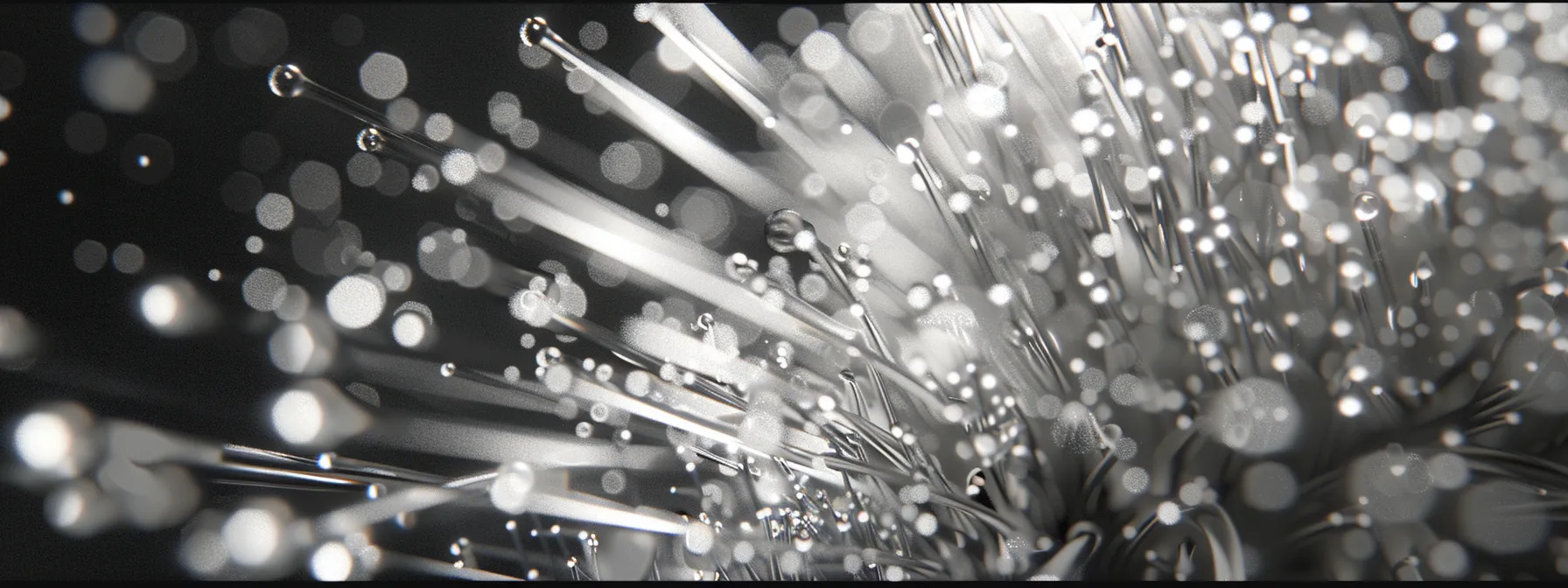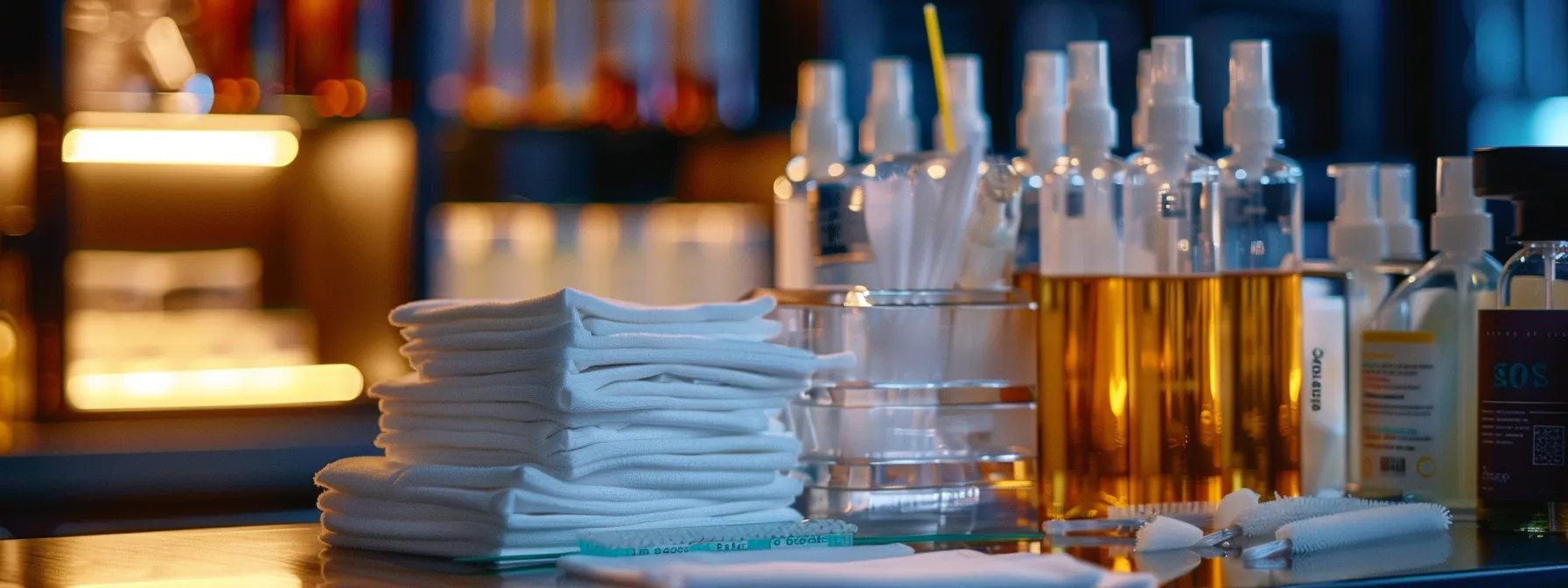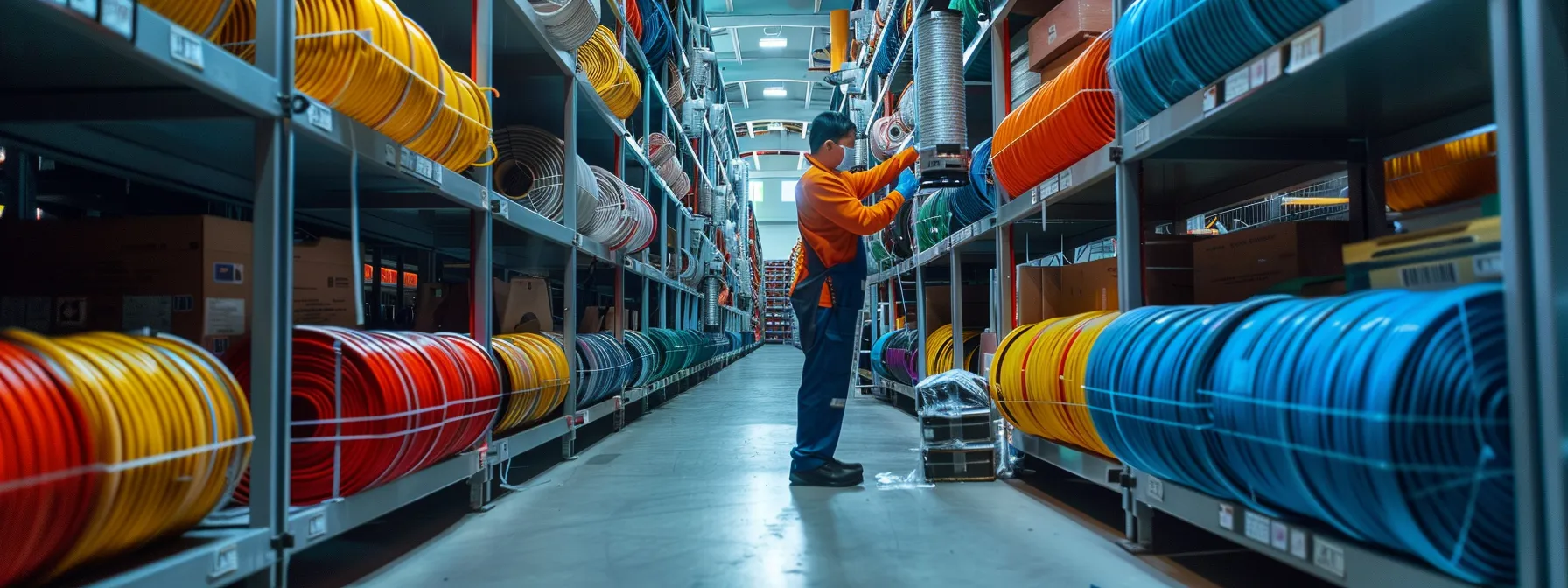
Fiber Optic Cleaning Solutions: The Ultimate Guide for Pristine Networks
Share
Fiber optic networks are vital for fast, reliable communication, but even the smallest contaminants can disrupt performance. Did you know that dirty connectors can lead to significant signal loss? This guide covers essential topics such as identifying common contaminants, using effective cleaning tools, and step-by-step cleaning techniques for patch cables and bulkheads. Readers will gain valuable insights into maintaining their systems, ensuring optimal performance and longevity. By addressing common issues with solvents like isopropyl alcohol and effective inspection methods, this content aims to help fibre optic engineers achieve pristine networks effortlessly.
Key Takeaways
- Regular cleaning practices are vital for optimal performance in fibre optic networks
- Contaminants from handling can significantly degrade signal transmission quality
- Adhering to industry standards ensures reliability and efficiency in fibre optic systems
- Utilising proper cleaning tools minimizes the risk of damaging sensitive fibre optic components
- Implementing maintenance schedules prolongs the lifespan of fibre optic components and enhances network reliability
Understanding the Role of Cleanliness in Fiber Optic Networks

Contamination can significantly impact signal transmission in fibre optic networks, hindering the performance of optical fibres. Understanding the importance of regular cleaning practices, particularly for components like ferrules and cladding, is essential for maintaining optimal functionality. Additionally, adherence to industry standards for fibre optic cleanliness ensures reliability and efficiency. This section will explore these critical areas, offering practical insights for fibre optic engineers and installers.
How Contamination Impacts Signal Transmission
Contamination, such as dust or grease on an adapter, can severely disrupt the process of total internal reflection within fibre optic cables, leading to reduced signal quality and increased transmission loss. The presence of cellulose particles from cleaning materials can introduce additional interference, resulting in signal degradation. Regular maintenance and cleanliness of fibre optic components are essential for ensuring optimal performance and reliable data transmission.
- Understanding total internal reflection is crucial for fibre optic functionality.
- Contaminants can originate from various sources, affecting adapters and connectors.
- Cellulose from cleaning products can leave residues, impairing signal integrity.
- Regular cleaning practices mitigate risks associated with evaporation of contaminants.
- Maintaining cleanliness enhances overall network performance and reliability.
The Importance of Regular Cleaning Practices
Regular cleaning practices are essential for maintaining the integrity of fibre optic networks, especially in data centres where high performance is crucial. Accumulation of dirt and debris on transceivers can lead to significant signal loss, affecting overall network reliability. Using appropriate cleaning materials, such as lint-free tissues, ensures that delicate components remain free of contaminants, thus supporting optimal data transmission and functionality.
- Understanding the need for cleanliness in data centres is vital for efficient signal transmission.
- Dirty transceivers can compromise network performance and data integrity.
- Implementing regular cleaning routines minimises the risks associated with dirt accumulation.
- Utilising appropriate cleaning tools, like lint-free tissues, protects sensitive fibre optic components.
- Ensuring the cleanliness of connections enhances overall signal quality and reliability.
Industry Standards for Fiber Optic Cleanliness
Industry standards play a pivotal role in ensuring the usability of fibre optics systems by establishing clear guidelines for cleanliness. These standards, such as those set by the Telecommunications Industry Association (TIA) and the International Electrotechnical Commission (IEC), detail acceptable levels of dust and other contaminants that can impair performance. By adhering to these benchmarks, professionals can ensure that the components remain free from undesired propellants and maintain optimal efficiency in data transmission.
- Industry standards guide the cleanliness and usability of fibre optic networks.
- Standards help define acceptable levels of dust and contaminants.
- Adhering to guidelines maintains optimal efficiency in fibre optics systems.
- Clear standards support the performance of sensitive fibre optic components.
Identifying Common Contaminants in Fiber Optic Systems

Dust and debris present invisible threats to fibre optic systems, often affecting signal clarity and performance. Oils and residues from handling components can introduce significant contamination, while environmental factors, such as humidity and temperature, further complicate network integrity. Recognising signs of contamination requires careful inspection, sometimes utilising a microscope to assess fibre diameter. This section will elaborate on these common contaminants and their impact on fibre optics.
Dust and Debris: The Invisible Threats
Dust and debris are primary contaminants that pose significant challenges in fibre optic systems, particularly in telecommunications environments. Even microscopic particles can disrupt signal transmission, leading to performance issues and reduced data integrity. Employing compressed air alongside appropriate cleaning tools, such as fibre optic cleaning pens, can effectively remove these particles, ensuring that connection points remain free from contamination and function at optimal levels.
Oils and Residues From Handling
Oils and residues from handling fibre optic components can significantly degrade network performance by obstructing the optical signal path. These contaminants often stem from the natural oils present on hands during installation or maintenance tasks. To mitigate this issue, technicians should employ proper handling protocols and utilise suitable cleaning solutions, such as isopropyl alcohol or specialised fibre optic cleaning wipes, before reconnecting any components.
- Recognise that oils can affect signal quality and transmission.
- Implement handling procedures to reduce contamination risks.
- Use effective cleaning solutions to prepare components for use.
Environmental Factors Affecting Fiber Optics
Environmental factors significantly impact the performance of fibre optic systems, often introducing contamination that can compromise signal clarity. Humidity can cause moisture to condense on sensitive components, leading to potential corrosion and signal degradation. Similarly, temperature fluctuations can promote the accumulation of dust and debris on fibre optic connections, further obstructing the optical signal and enhancing the need for regular cleaning solutions tailored to mitigate these environmental challenges.
Recognising Signs of Contamination
Recognising signs of contamination in fibre optic systems is vital to maintaining performance and reliability. Symptoms such as intermittent signal loss, increased bit error rates, or a noticeable decline in transmission quality often indicate the presence of dust, oils, or other contaminants. Performing regular inspections and using tools like a fibre microscope can help identify these issues early, enabling technicians to take appropriate cleaning measures before they escalate into more significant problems.
Essential Tools for Effective Fiber Optic Cleaning

Selecting the right cleaning kits is essential for maintaining fibre optic networks, as it sets the foundation for effective cleaning. Understanding how to use lint-free wipes and swabs properly, along with choosing appropriate cleaning fluids, can significantly enhance the cleaning process. Additionally, utilising inspection microscopes aids in assessing cleanliness, ensuring that components are free from contaminants. These key areas will be explored to provide practical insights for fibre optic engineers and installers.
Selecting the Right Cleaning Kits
Selecting the right cleaning kits is essential for maintaining optimal performance in fibre optic networks. Engineers and installers should look for kits that include lint-free wipes, fibre optic cleaning pens, and isopropyl alcohol for effective cleaning of connectors and adapters. Furthermore, choosing kits that meet industry standards ensures that the cleaning products will not leave harmful residues that could compromise signal integrity:
- Choose kits with lint-free materials to prevent contamination.
- Ensure cleaning solutions are safe for optical surfaces.
- Verify that included tools meet the specific cleaning needs of fibre optic installations.
Using Lint-Free Wipes and Swabs Correctly
Using lint-free wipes and swabs correctly is crucial for maintaining the cleanliness of fibre optic components. These tools are specifically designed to avoid leaving behind fibrous residues that could interfere with signal transmission. Proper technique includes using a gentle wiping motion to eliminate contaminants without scratching delicate surfaces, thereby ensuring optimal performance of the fibre optic network.
Choosing Appropriate Cleaning Fluids
Choosing appropriate cleaning fluids is crucial for maintaining the integrity of fibre optic systems. Isopropyl alcohol is often recommended because it evaporates quickly and leaves no residue, making it ideal for cleaning optical surfaces. Additionally, specialised fibre optic cleaning solutions can remove specific contaminants without risking damage to fibre components, ensuring optimal performance and longevity in network functionality.
Utilising Inspection Microscopes
Utilising inspection microscopes is critical for achieving and maintaining cleanliness in fibre optic networks. These tools allow technicians to closely examine connectors and adapters for contaminants like dust and residues, which may not be visible to the naked eye. By integrating inspection microscopes into cleaning protocols, professionals can identify potential signal issues early on, ensuring that all components are free from interference and supporting optimal network performance.
Step-by-Step Guide to Cleaning Fiber Optic Connectors

Cleaning fibre optic connectors is essential for maintaining optimal performance in network systems. This guide will cover the necessary preparations for workspace safety, effective cleaning methods tailored to various connector types, and how to verify cleanliness post-cleaning. Additionally, it will provide practical tips to prevent recontamination, ensuring the integrity and reliability of fibre optic connections.
Preparing Your Workspace Safely
Ensuring a safe and organised workspace is critical when preparing to clean fibre optic connectors. This involves selecting a clean, dust-free environment and arranging all necessary tools and cleaning materials within easy reach to prevent unnecessary movement that could introduce contaminants. Proper personal protective equipment, such as gloves and safety goggles, should be worn to avoid direct contact with cleaning solutions and protect against potential debris, helping to maintain both personal safety and the cleanliness of the fibre optic components.
Cleaning Methods for Various Connector Types
Different types of fibre optic connectors require specific cleaning methods to ensure optimal performance. For SC and LC connectors, using a fibre optic cleaning pen with isopropyl alcohol allows for effective removal of contaminants without scratching delicate surfaces. Conversely, MPO connectors, which have multiple fibres, benefit from specialised cleaning kits that include compact cleaning rods designed to reach all fibre ends effectively and remove any obstructive debris.
Verifying Cleanliness Post-Cleaning
Verifying cleanliness post-cleaning is a vital step to ensure optimal performance of fibre optic connectors. Technicians should use an inspection microscope to examine the connectors closely, ensuring that no dust, oil, or residues remain that could hinder signal transmission. Upon inspection, if contaminants are detected, additional cleaning may be necessary to guarantee the integrity of the fibre optic connection:
- Begin by inspecting the connector with a microscope.
- Look for any visible dust, residue, or foreign particles.
- If contaminants are present, repeat the cleaning process as needed.
- Ensure all components are free from blemishes for optimal performance.
- Regularly implementing this inspection protocol maintains network reliability.
Tips to Prevent Recontamination
Preventing recontamination of fibre optic connectors is crucial for maintaining signal integrity and network performance. Technicians should implement strict handling procedures, such as using gloves to avoid transferring oils and dirt from hands onto the connectors. Additionally, maintaining a clean workspace—free from dust and debris—prior to and during the cleaning process will further protect the connectors from potential contaminants:
- Always wear gloves when handling fibre optic components.
- Utilise lint-free wipes specifically designed for fibre optics.
- Keep the cleaning area clean and organised to minimise exposure to contaminants.
- Store cleaned connectors in protective cases until installation.
- Conduct regular training on best practices for fibre optic maintenance.
Maintaining Fiber Optic Components for Longevity

Implementing regular maintenance schedules is essential for prolonging the lifespan of fibre optic components. Proper storage techniques also play a crucial role in avoiding contamination, protecting sensitive parts from exposure to dust and oils. Furthermore, training team members in best practices ensures a consistent approach to fibre optic care, minimising risks and enhancing network performance. These strategies are vital for maintaining pristine networks.
Implementing Regular Maintenance Schedules
Implementing regular maintenance schedules is vital for ensuring the longevity of fibre optic components and maintaining optimal network performance. A structured cleaning regime, performed on a consistent basis, allows technicians to identify potential issues early, such as contamination or signal degradation, that could disrupt data transmission. By establishing a timetable that includes routine inspections and cleaning protocols, fibre optic engineers can significantly reduce the risk of performance problems, ultimately enhancing the reliability and efficiency of networking systems.
Proper Storage Techniques to Avoid Contamination
Proper storage techniques are essential for avoiding contamination of fibre optic components and ensuring their longevity. Storing fibre optic cables and connectors in clean, dust-free environments, preferably in protective cases or sealed bags, significantly minimizes exposure to harmful particles and oils. Additionally, keeping storage areas temperature-controlled and dry helps prevent moisture accumulation, further safeguarding these sensitive components:
- Store cables and connectors in protective cases.
- Keep storage areas clean and organised.
- Maintain a dry and temperature-controlled environment.
- Regularly inspect stored items to ensure cleanliness.
Training Team Members in Best Practices
Effective training for team members in best practices is crucial for the longevity of fibre optic components. Providing hands-on demonstrations and comprehensive instructions on proper handling, cleaning, and storage techniques can significantly reduce the risk of contamination and damage. Engaging employees in regular training sessions helps instil a culture of cleanliness and care, ultimately enhancing network reliability and performance.
Innovations in Fiber Optic Cleaning Solutions

Automated cleaning devices are transforming the landscape of fibre optic maintenance, providing efficient and effective solutions for contamination issues. Advances in non-contact cleaning technologies further enhance these methods, minimising the risk of damage to sensitive components. This section will also delve into future trends in fibre optic maintenance, highlighting innovations that promise to improve network performance and reliability.
Introduction to Automated Cleaning Devices
Automated cleaning devices are revolutionising the maintenance of fibre optic networks, offering a systematic approach to contamination management. These machines use advanced methodologies, such as non-contact cleaning techniques, to efficiently remove dust and debris without risking damage to sensitive optical components. By integrating automated cleaning solutions into regular maintenance routines, fibre optic engineers can significantly reduce manual cleaning time while ensuring consistent, high-quality results that enhance overall network performance.
Advances in Non-Contact Cleaning Technologies
Advances in non-contact cleaning technologies are significantly enhancing the maintenance of fibre optic networks by providing effective solutions that minimise the risk of damage to delicate components. These innovative techniques often employ laser or air-based systems to remove contaminants without physical contact, ensuring that sensitive surfaces remain intact and functional. As fibre optic networks become increasingly integral to communication infrastructure, embracing these state-of-the-art cleaning methods will enable professionals to maintain optimal performance while reducing the likelihood of operational disruptions.
Future Trends in Fiber Optic Maintenance
Future trends in fibre optic maintenance are focusing on the integration of artificial intelligence (AI) and machine learning to enhance cleaning protocols. These advanced technologies are expected to analyse data from network performance, predicting when maintenance is required, thus minimising downtime and ensuring optimal functionality. As automation becomes more prevalent, the reliance on manual cleaning will decrease, allowing technicians to focus on strategic network improvements, ultimately leading to more robust and efficient fibre optic systems.
Conclusion
Maintaining cleanliness in fibre optic networks is essential for ensuring optimal performance and reliability. Regular cleaning practices, adherence to industry standards, and the use of appropriate tools and materials significantly reduce contamination risks that can disrupt signal transmission. Implementing effective cleaning routines not only protects sensitive components but also enhances overall network efficiency. By prioritising fibre optic cleaning solutions, professionals can safeguard data integrity and maintain pristine networks.
